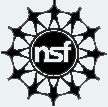
Linking Proposed Research with USGS NASA Ames
Urban Retrospectives/Urban Dynamics Project
Build on prior successes using
San Francisco and Washington-Baltimore:
Extend these Studies to four new Cities
Year 1
Model each of the four cities with UGM and compare
results
between Regions and accross scales
-Link to LANL and USGS:
This work is an extension of methods developed by USGS
urban
retrospectives program and can be used by LANL for 'What
if?'
scenarios of the Urban Security Research
Year 2
Carry out a more in-depth study of the Portland, OR
metropolitan
area in an attempt to assess the effect of major
planning controls
on urban change.
-Link to LANL and USGS:
Portland's history of pro-active planning regarding its
urban
boundary allows for tests of the Urban Growth Models
and
exploration of the consequences this kind of planning
may
have on Urban Security Issues.
Year 3
Extend the model to simulate the growth of Mexico City.
This will be an
attempt to assess the extent to which a model built and
calibrated for use
in the US may also be applicable to cities in other parts
of the world and
in particular the developing world
-Link to LANL and USGS:
Topography
Earthquakes
Traffic problems
Air pollution
excellent candidate for testing LANL's work on the Airborne Toxic
Release/Emergency Response model
involves the TRANSIMS traffic simulation module
Integration of the LANL work with the urban growth model will
allow a series
of experiments not possible with either model alone.
Support for this project is from the National Science Foundation : 
Contact the project Web Master.